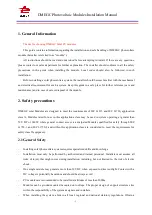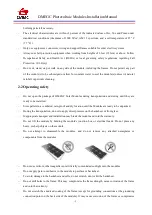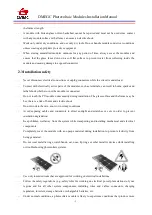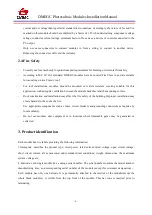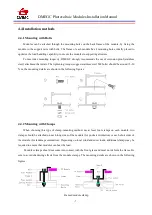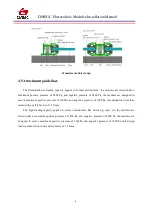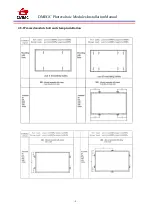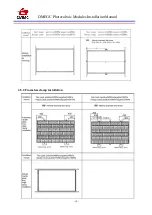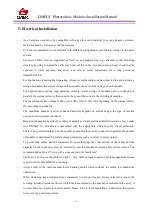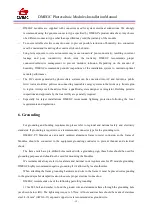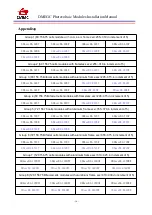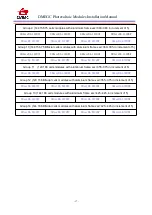
DMEGC Photovoltaic Modules Installation Manual
- 14 -
7.1 Visual Inspection
Inspect the modules visually to find if there are any visual defects, If there are, the following items should
be evaluated:
If modules are observed having slight cell color differences at different angles, this is a normal
phenomenon of modules with anti-reflection coating technology.
Whether the glass is broken.
No sharp objects are in contact with the PV module surfaces.
PV modules are not shaded by unwanted obstacles and; or foreign material.
Corrosion along the cells’ bus-bar. The corrosion is caused by moisture intrusion thought the module
back sheet. Check the back sheet for damage.
Check whether the back sheet is burn out. g) Check if screws and mounting brackets are tight, adjust
and tighten as necessary.
7.2 Cleaning
Clean the glass surface of the module as necessary. Always use water and a soft sponge or cloth for
cleaning.
A mild, nonabrasive cleaning agent can be used to remove stubborn dirt.
In order to reduce the potential for electrical and thermal shock, DMEGC recommends cleaning PV
modules during early morning or late afternoon hours when solar radiation is low and the modules are
cooler, especially in regions with hotter temperatures.
Never attempt to clean a PV module with broken glass or other signs of exposed wiring, as this
presents a shock hazard.
Never use chemicals when cleaning modules as this may affect the module warranty and energy
output.
7.3 Inspection of Connector and Cable
It’s recommended to implement the following preventive maintenance every 6 months:
Check the sealing gels of the junction box for any damage.
Examine the PV module(s) for signs of deterioration. Check all wiring for possible rodent damage,
weathering and that all connections are tight and corrosion free. Check electrical leakage to ground.
If any problem arises, consult a professional solar service provider for suggestions. Caution: observe


